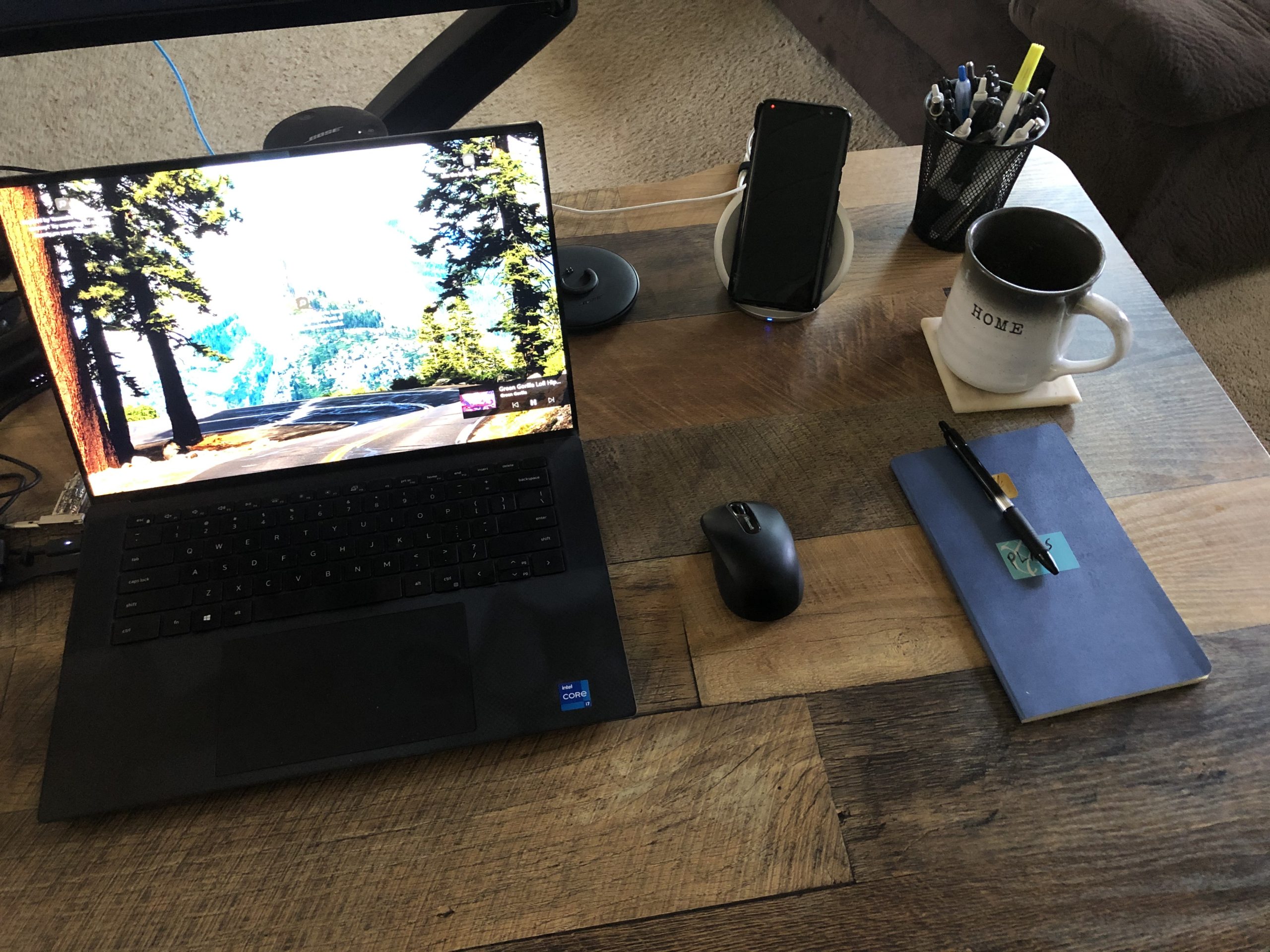I recently watched a video that questioned the identity property of mathematics by suggesting that this property fails when you attempt to apply it to a real world example such as money. The narrator of the video posed the following question: “What is a penny times a penny?”

Following the question, the video shows a graphic of two pennies with the multiplication sign of “x” between them. Further, the narrator states that you have two pennies, but the identity property would suggest that one times one equals one (1 x 1 = 1 OR 1 penny x 1 penny = 1 penny). However, since there are two pennies in front of you, the narrator suggests that the identity property has failed.
The video then does the math of a penny being one percent of the number one. They get:
0.01 x 0.01 = 0.0001
Following this, the video suggests that there is no such thing as a currency with the final value of 0.0001 of any base currency. The video is correct in this conclusion. The standard, U.S. penny is the smallest denomination of U.S. currency, and it represents one percent of the U.S. Dollar.
If you’d like to see the presentation of the problem, then you can do so on the YouTube platform, at this timestamped portion of the video.
In this article, I will take a shot at explaining how this problem should be both viewed and solved for in two different scenarios: mathematical and economic. I will then offer thoughts on the validity of this example as a way to question the identity property of mathematics.
Definitions
Before I dive in, let’s set the definition of a penny. A penny represents one percent of the value of some base currency. By default the U.S. penny’s value is tied to the U.S. Dollar. Therefore, the standard, U.S. penny has a default value of one percent of the value of the U.S. Dollar. When we do the math, we get:
1 penny = 0.01 x 1.0USD = .01USD
This equivalence will be used as the basis for solving the stated problem of “a penny times a penny” in the two methods I mentioned previously.
A Mathematical Solution
A mathematical approach to solving “a penny times a penny” should consider multiplying one standard, U.S. penny against a second standard, U.S. penny. For brevity, the standard, U.S. penny will be referred to as “penny” in this exercise.
1 penny x 1 penny = 0.01USD x 0.01USD
= 0.0001(USD2)
= 0.0001(100 penny)2; note: as stated above, 1 USD = 100 penny
= 0.0001(10,000penny2)
= 1 penny2
As we can see, one penny times one penny equals one square penny, from a purely mathematical perspective.
However, we are talking about money, here. Money is currency that we use to purchase goods and services. Specifically, we are discussing currencies that are specific to the U.S. monetary system: U.S. Pennies and U.S. Dollars.
But what is a “square penny”? I’m certain that I do not know. Let’s take a look at other areas of science and mathematics that may give us a clue. There are a couple of concepts that feature square units that may give us insight: acceleration and physical dimensions.
What is acceleration? Acceleration is the rate of change of the velocity of an object, over time. To make this example simple, we’ll consider that we’re accelerating an object within a void. This way, we don’t have to worry about extraneous forces that both typically exist within an atmosphere and can affect the acceleration of an object, such as both friction and gravity. Okay, so we are standing on a platform in outer space, and we launch a drone that has a propulsion system that accelerates the unit at 100 ft/s2. What does this mean? It means that the drone is moving at an acceleration of 100 feet per second per second. Come again? What that descriptive statement means is that for every second the drone is accelerating, it’s velocity (speed) increases by 100 feet per second. For example, after accelerating for 30 seconds, the drone will be traveling at a velocity of 3000 feet per second.
velocity = acceleration x time
velocity = 100 ft/s2 x 30s
velocity = (100 x 30) ft/s
velocity = 3000 ft/s
In this example of physics, we see that a square unit in the denominator of an expression that has a unit of measurement in the numerator can mean a rate of change. Now, let’s look at physical dimensions, a geometric consideration.
Let’s say we have a line that is one inch long. Let’s say we square the length of that line.
1 in x 1 in = 1 in2
What is “1 in2“? This can be described as “one square inch”. A square unit of a physical measure results in an area of coverage. In this case, we would likely have a square shape that has four sides that are all one inch in length.

Unfortunately, a penny is not a physical unit of measure. It is a measure of economic value, a unit of currency. During research, I was unable to find a real world application for a squared currency. Taking this one step further, we, as a human species, tend to make discoveries in both math and science to either support actual endeavors we are approaching or understand physical phenomena that are mysterious to us. There is no need to multiply currency against other currency. There is no application for doing so. We deal with the following functions with regard to money:
- Addition. When we receive any kind of payment, we add the payment to the total amount of currency we already have.
- Example: Your employer pays you wages via direct deposit, and the funds are automatically added to your bank account.
- Subtraction. When we pay bills, we subtract the bill amount from our total holdings of currency.
- Example: Making either rent or mortgage payments.
- Multiplication and Division. These operations are typically applied in the area of interest with respect to contracts for both large purchases and contractual payments.
- Example 1: Purchasing a house will result in an annual percentage rate (APR) being applied to all payments the purchaser makes toward the home, based on the outstanding principle still owed on the home.
- Example 2: Two parties enter a contract in which the first party agrees to pay the second party for the provision of a stated service. The contract may include stipulations on the quality of of the service. If the service lacks certain features when supplied, then the first party may have added clauses in the contract that specify halving the payment to the second party, a 50% reduction, or division by 2.
- Note: These types of multiplication and division are based on multiplying or dividing currency based on purely numeric percentages, not other currency values. This is not the case in the “penny times a penny” problem, as presented.
Now let’s take a look at the problem from a potentially economic perspective.
An Economic Solution
From an economic perspective, when we suggest the scenario of “a penny times a penny”, what we are likely asking is, “What is the penny value of a penny?” In our scenario, we have reset one penny’s value to be relative to the default value of a standard U.S. penny, not the U.S. Dollar itself. Or, in other words, we are asking for “one percent of one percent of the U.S. Dollar”. So, when we do the math, we get:
penny of a penny = .01 x .01USD = .0001USD
At this point, we will develop a new coin named, “penny of a penny”, and its default value will be one percent of the standard penny, or .0001USD.
Note: This default value changes with respect to the default value of the standard penny. Example: If the standard penny’s default value is ever changed to be relative to a currency other than one U.S. Dollar, then “penny of a penny” would have a default value equivalent to one ten thousandth of that new base currency. Let’s use an example to illustrate this scenario.
Example of Penny Times a Penny With a New Base Currency:
A new base currency is created called New Base Currency (NBC). The standard, U.S. penny is now pegged to one denomination of New Base Currency. The standard, U.S. penny now has a value of one percent of one New Base Currency. Further, “penny of a penny” now has a value of “one percent of one percent of New Base Currency”, or .0001NBC. Its relative value is the same.
1penny = 0.01NBC
1 “penny of a penny” = 0.01penny = 0.01 x 0.01NBC = 0.0001NBC
In this scenario, we’re making new currency. This is the closest approximation of a real world, economic example of multiplying currency against itself.
Additionally, no individual in possession of two pennies could mitigate any action that would result in “a penny times a penny”. Why? As stated, this action causes us to create new currency. This can only be achieved by an act of the U.S. Congress, not at the whim of an individual citizen.
Again, we have come to a result for “a penny times a penny”, but it is not representative of a typical, real life application.
Conclusion
What is displayed in the video is a question asking, “What is a penny times a penny?”, followed by a visual example of “a penny plus a penny” and math that represents “a penny times a penny”. The math is correct. It’s described in a way that isn’t representative of the math.
I believe that the reason this concept is misunderstood in the video is because there is no real world application of “a penny times a penny”. Yet, the narrator questions this as though there should be a real world application for this math problem. When we hold two pennies in the real world, that is a real world example of addition, not multiplication. There is no actual scenario in real life in which you can take two groups of items and multiply them against themselves, and this is especially true of money.
In the economic example, – admittedly an approximation of the original problem – we found that we’d be creating new currency, which is also not a real-world application for an individual citizen.
The video seems to indicate that “a penny times a penny” is unknowable based on a supposed failure of the identity property. However, with clear thinking, we can surely conclude an answer to this question: The result is knowable, but it neither represents a real-world application for the everyday citizen nor does it successfully disprove the validity of the identity property of mathematics.
What do you think? What is the true value of “a penny times a penny”? Share your thoughts in the comments below!


One response to “A Penny Times a Penny”
Nice wrte-up! Great example of inspiring critical thought!